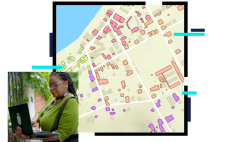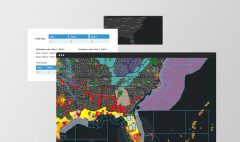Getting Started with ArcGIS: A Beginner’s Guide to Mastering Geospatial Analysis
June 13, 2023 2023-06-13 9:00Getting Started with ArcGIS: A Beginner’s Guide to Mastering Geospatial Analysis
Getting Started with ArcGIS: A Beginner’s Guide to Mastering Geospatial Analysis
Geospatial analysis is a powerful tool that allows us to understand the world around us in a whole new way. With ArcGIS, a leading Geographic Information System (GIS) software, you can unlock the potential of geospatial data and delve into the fascinating realm of geospatial analysis. Whether you’re a student, a professional in the field, or simply curious about GIS, this beginner’s guide will help you embark on your journey to mastering geospatial analysis with ArcGIS.
- Familiarize yourself with the interface: As a beginner, start by exploring the ArcGIS interface. Get acquainted with the different windows, tools, and menus available. Take your time to understand the layout and how the various components work together.
- Learn the basics of spatial data: Geospatial analysis revolves around spatial data. Familiarize yourself with the different types of spatial data, such as points, lines, polygons, and raster data. Understand coordinate systems, map projections, and spatial references, as they play a crucial role in accurate geospatial analysis.
- Acquire geospatial data: To perform geospatial analysis, you need data. ArcGIS provides various ways to acquire geospatial data, including online sources, data providers, and even creating your own data using GPS or other data collection techniques. Start by exploring freely available data and gradually move towards more specialized datasets.
- Explore data management: Effective data management is essential for successful geospatial analysis. Learn how to organize, store, and manage your geospatial data within ArcGIS. Understand file formats, databases, and best practices for data organization. Master the art of data cleaning and preparation, as it forms the foundation of accurate analysis.
- Perform basic geospatial analysis: Begin with simple geospatial analysis techniques, such as spatial queries, buffering, and overlays. These techniques allow you to explore relationships between different spatial features and analyze their intersections and overlaps. Experiment with these tools and gain hands-on experience.
- Dive into advanced analysis techniques: Once you’ve mastered the basics, it’s time to expand your skills. ArcGIS offers a wide range of advanced geospatial analysis tools, including spatial statistics, interpolation, network analysis, and 3D analysis. Explore these techniques to uncover deeper insights and tackle complex spatial problems.
- Visualize your findings: A picture is worth a thousand words, and data visualization is key to effective communication. ArcGIS provides numerous options to create visually stunning maps, charts, and graphs to present your geospatial analysis results. Learn how to use symbology, labeling, and layout techniques to create compelling visualizations.
- Leverage online resources: ArcGIS has a vibrant online community, offering a wealth of resources. Take advantage of tutorials, forums, and user groups to expand your knowledge and troubleshoot issues. Esri Eastern Africa has extensive documentation, webinars, and training courses to enhance your learning experience.
- Practice, practice, practice: Geospatial analysis is a skill that improves with practice. Undertake projects that align with your interests or professional goals. Work on real-world datasets and solve spatial problems relevant to your domain. The more you practice, the more confident and proficient you’ll become in ArcGIS.
- Embrace lifelong learning: GIS technology is constantly evolving, and there’s always something new to learn. Stay up to date with the latest developments in ArcGIS and geospatial analysis. Explore emerging trends like remote sensing, spatial data science, and artificial intelligence in GIS. Continuously seek opportunities to expand your skills and knowledge.
Remember, becoming proficient in geospatial analysis with ArcGIS is a journey. So embrace the journey, explore the vast capabilities of ArcGIS, and let your passion for geospatial analysis guide you as you unlock the world of spatial data and its endless possibilities. You can also sign up for our training courses here.
Related Posts
Exciting Updates in ArcGIS StoryMaps (April 2024)
Tips & Tricks: Field Data Collection Best Practices
Visualizing Real-Time Data for Effective Decision Making
Mastering Geospatial Data Management in ArcGIS Pro
Categories




